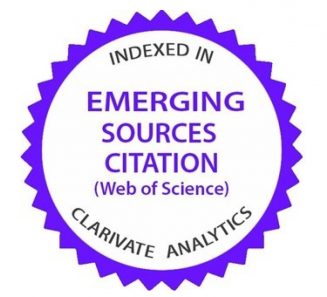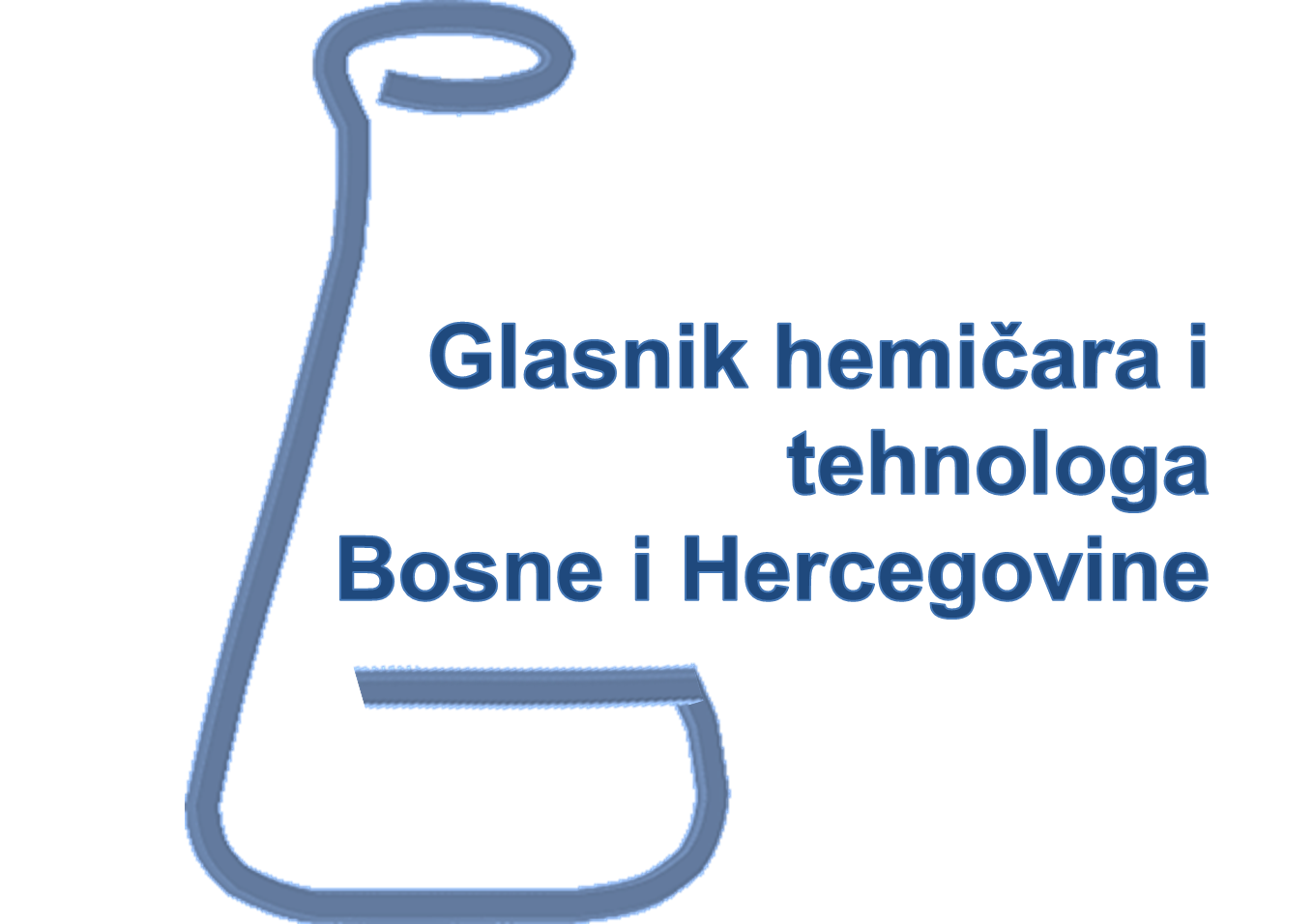|
|
Bulletin of the Chemists and Technologists of Bosnia and Herzegovina
Issue 50
Publication date: June 2018 |
|
Table of contents
HPLC method for determination the content of thymol and carvacrol in Thyme tincture Original Scientific Article
Dedić Mirza, Bečić Ervina, Imamović Belma, Žiga Nermina, Medanhodžić-Vuk Saira, Šober Miroslav
Abstract: Genus Thymus contains about 300-400 species, many of which are used in traditional medicine. Thymus vulgaris (thyme) is the most commonly used Thymus. In official medicine, thyme is used as a general medicine for colds, flu, fever, coughing and bronchitis, such as: an antiseptic, spasmolytic, antifungicide, antitus, tonic, antihelmintic, antioxidant agent, antivirantic agent, carminative, sedative, diaforetic, antibacterial and as refresh remedy. The pharmacological effects of thyme are most closely related to its polyphenolic components, thymol and carvacrol. The most used chromatographic methods for determination of active compounds in herbal preparation is high-performance liquid chromatography. Results obtained by statistical processing are in the reference interval, which is recommended by the ICH guidelines. By analyzing Thymi tincturae, it was found that the concentration of thymols was 0.807 mg/g of tincture, while the concentration of carvacrol was 0.082 mg/g tincture. This analysis is very fast, reliable and economical.
The method does not require a complicated sample preparation and as such can be used in the regular control of the content of thymol and carvacrol in the finished product and the semi-product (tincture).
Bulletin of the Chemists and Technologists of Bosnia and Herzegovina 50, 1-6.
The effects of a context-rich approach in teaching thermodynamics Original Scientific Paper
Mahmutović Sabaheta, Mešić Vanes
Abstract: Earlier research shows that at all educational levels students have many misconceptions about thermal phenomena. Often these misconceptions are related to difficulties with differentiating the meaning that concepts have in everyday language and in the language of science. In this study we aimed to investigate the effects of enriching traditional instruction about thermodynamics with qualitative and quantitative examples from everyday life. To that end we conducted a pre-post quasi-experiment with 114 high-school students (mostly 15-year-olds) divided into four subgroups. Two subgroups (n=60) received the traditional instruction, whereas in the remaining two subgroups (n=54) a context-rich approach to learning thermodynamics has been implemented. Analysis of covariance showed that there are no statistically significant between-group differences when it comes to conceptual understanding of thermodynamics. However, the context-rich approach proved to be significantly more effective when it comes to increasing students' interest in science. The level of aroused interest was higher in girls than in boys.
Bulletin of the Chemists and Technologists of Bosnia and Herzegovina 50, 7-12.
Hemoglobin HbA1c and glucose blood levels in diabetic patients Original Scientific Paper
Tahirović Ismet, Mahovac Enesa, Dizdar Muamer, Toromanović Jasmin, Mahmutović Omer, Lepara Zahid, Ajanović Atifa
Effect of solvents on phenolic compounds extraction and antioxidant activity of Prunus spinosa L. fruits Original Scientific Paper
Tahirović Azra, Bašić Neđad, Čopra-Janićijević Amira
Abstract: The aim of this work was quantification of phenolic compounds and determination of antioxidant activity of Prunus spinosa fruit extracts. Extractions of phenolic compounds were carried out with water and four alcohol mixture (50% methanol, 50% ethanol, 80% methanol, and 80% ethanol). Spectrophotometric determination of phenolic compounds was done by Folin-Ciocalteu method and flavonoids with AlCl3 method. Arnow reagent was used in determination of phenolic acid content while anthocyanin content was determined with pH differential method. Butanol-HCl assay was applied to determine proanthocyanidin content. Investigated phenolic compounds were in the range of 14.02-30.20 mg GAE/g dw (total phenolic compounds), 0.789-1.538 mf RE/g dw and 0.450-1.039 mg QE/g dw (flavonoids), 4.55-7.24 mg CAE/g dw (phenolic acids), 0.361-1.05 mg CGE/g dw (anthocyanins), 3.97-26.49 mg CE/g dw (proanthocyanins). The highest content of investigated compounds was found for 50% ethanol extract (except anthocyanins) and the lowest content was in water extract. The highest antioxidant activity had 50% ethanol extract for all antioxidant methods. Very high correlations were found between antioxidant activity and content of all analyzed compounds.
Bulletin of the Chemists and Technologists of Bosnia and Herzegovina 50, 19-24.
Gender differences in understanding of thermal expansion Original Scientific Paper
Vidak Andrej
Abstract: Investigation of gender differences in science allows us to tailor our instruction to the needs, interests and abilities of all our students. In this study we aimed to investigate gender differences in conceptual understanding of thermal expansion. To that end tenconceptual questions were administered to 195 first year students at the Faculty of Chemical Engineering and Technology, University of Zagreb. Male students significantly outperformed female students. Particularly large differences in favor of males were observed on questions that required reasoning about thermal expansion in one dimension.
Bulletin of the Chemists and Technologists of Bosnia and Herzegovina 50, 25-30.
Influence of the delta ferrite content on the corrosion behavior of austenitic stainless steel Nitronic 60 Original Scientific Paper
Gigović-Gekić Almaida, Bikić Farzet, Avdušinović Hasan
Abstract: Nitronic 60 (UNS S21800) is a highly alloyed austenitic stainless steel with increased content of manganese and silicon. It has a good mechanical and corrosion properties at elevated temperatures and loads. Nitronic 60 has the austenitic microstructure at room temperature but depending on chemical composition the presence of other phase in austenite matrix is possible, i.e. delta ferrite. The aim of this study is better understanding of delta ferrite content influence on corrosion sensitivity of Nitronic 60. The corrosion sensitivity test was conducted in the corrosion cell using potentiostat/galvanostat according to Standard ASTM G5 (Princeton Applied Research, model 263A-2, with the PowerCORR® software), (Standard, ASTM G5-94). Investigation was performed in 0.9% NaCl solution. Taffel extrapolation method was used to test general corrosion. Method of cyclic polarization was used for investigation of pitting corrosion. Tests were performed at room temperature, 20±1°C.The corrosion tests results indicate that the intensity of both examined forms of corrosion, general and pitting corrosion, is increased with increasing delta ferrite content.
Bulletin of the Chemists and Technologists of Bosnia and Herzegovina 50, 31-34.
Correlation between hemoglobin A1c and lipid profile in Bosnian diabetic patients - gender differences Original Scientific Paper
Mandal Šaćira, Čaušević Adlija
Abstract: The prevalence of Type 2 diabetes mellitus (T2D) as a metabolic disease is rapidly rising worldwide. The purpose of this study was to determine concentrations of hemoglobin A1c (HbA1c), fasting glucose, and lipid profile in a total of 104 adults, 24 patients with newly diagnosed Type 2 diabetes (40-60 years of the age), 40 Type 2 diabetes, and 40 healthy subjects as control group (the same ages). On the basis of these results, we were able to assess the differences due to gender and age in tested population as well as the relationship between glycemic control (HbA1c) and serum lipid profile. Therefore, we properly evaluated the importance of HbA1c as an indicator of dyslipidemia in patients with T2D in selected Bosnian population. Hemoglobin A1c was determined by immunoturbidimetric assay, while fasting glucose and lipid profile were analyzed according to standard clinical methods on BT PLUS 2000-Biotechnic Instruments Bioanalyzer. We found that glycated hemoglobin concentrations in newly diabetic subjects were higher than those in other two groups. Statistically significant differences between study populations were seen at the level of glucose, cholesterol, HDL and LDL cholesterol, HbA1c, triacylglycerol and patient age. Also, our results have shown the significant negative correlation between HbA1c and cholesterol and HDL levels (p***<0.001) while positive correlation was observed with glucose and patient age (p***<0.001) in all study groups. According to our results, hemoglobin A1c can also be used as a predictor of dyslipidemia and thus early diagnosis of dyslipidemia can be used as a preventive measure for the development of cardiovascular diseases in patients with Type 2 diabetes mellitus.
Bulletin of the Chemists and Technologists of Bosnia and Herzegovina 50, 35-42.
Chemical characterization, antimicrobial and antioxidant properties of Mentha spicata L. (Lamiaceae) essential oil Original Scientific Paper
Nikšić Haris, Durić Kemal, Omeragić Elma, Nikšić Hedija, Muratović Samija, Bečić Fahir
Abstract: The aim of the present study was to examine chemical composition, antibacterial and antioxidative activity of essential oil extracted from the leaf of Mentha spicata. The essential oil composition was investigated by GC/MS. Thirty three components were identified, accounting for 98,9% of the essential oil. Dominant components were carvone (56,4%), limonene (16,2%), 1,8 cineole (7%), β-pinene (2,4) and α- terpinene (2,3%). Agar disk diffusion assay was used to evaluate antibacterial activity of essential oil. The essential oil exhibited significant level of antibacterial activity against all tested bacterial strains. In general, Gram-negative bacteria were more susceptible to M. spicata essential oil than Gram-positive bacteria. E coli was the most sensitive of the microorganisms to the antibacterial activity of M. spicata essential oil. The 2,2-diphenyl-l-1-phthydrazide (DPPH) radical removal method was used for evaluating the antioxidant potential of the essential oils.. The result showed a considerable level of antioxidant activities of the essential oil investigated with (IC50 = 41, 23 µg/mL). Based on our results, M. spicata essential oil with a strong antioxidant and antibacterial activities, could serve as a safe natural antioxidant and antiseptic supplements in the pharmaceutical and food industry.
Bulletin of the Chemists and Technologists of Bosnia and Herzegovina 50, 43-48.
Determination of clindamycin hydrochloride content in 1% clindamycin lotion Original Scientific Paper
Dedić Mirza, Bečić Ervina, Imamović Belma, Žiga Nermina
Abstract: Clindamycin is a broad spectrum antibiotic that belongs to the lincosamide group. It acts mostly as a bacteriostatic antibiotic, but it also has mild bactericidal activity. The most common clinical conditions in which they are used are: infections in gynecology, gingiva infections, respiratory tract, skin and soft tissue infections, intra-abdominal infections, pneumonia caused by Pneumocystis jiroveci, toxoplasmosis, malaria, babesiosis, and acne. Clindamycin is available in several pharmaceutical forms, which can be administered orally, intravenously, intramuscularly or intradermally. It is usually prepared as an ex tempore 1% clindamycin lotion that is used dermally, in the treatment of a mild form of acne. The proposed UV-Vis spectrophotometric method allows analyzing the content of clindamycin hydrochloride in the extemporaneous formulation of 1% clindamycin lotion. Clindamycin chloride content analysis was performed on samples of 1% clindamycin lotions purchased in pharmacies in Canton Sarajevo. The results showed that the content of clindamycin hydrochloride in the ex tempore prepared preparations varied from 21% to 142%.
The UV-Vis method does not require complicated preparation of the sample, and is therefore fast, reliable and economical, and as such can be used in regular control of the content of clindamycin hydrochloride inex tempore prepared lotion.
Bulletin of the Chemists and Technologists of Bosnia and Herzegovina 50, 49-54.
Application of Photochemistry Principles, Models, and Simulations in the Study of Gaseous Components of Space Bodies and Interstellar Matter with Recent Developments Review
Krečo Anes, Biščević Helena, Handžić Azra, Gojak-Salimović Sabina
Abstract: Space exploration was from its inception multidisciplinary field of research. Whether it is a design of devices that separate light into it different wavelengths, comparison of extracted data to known characteristics of spectrum of molecules, engineering of complex autonomous system of interplanetary probes or intricate calculations of vehicle trajectories, the objective was the same, understanding of the Universe around us. Chemistry as fundamental natural science finds its place in the area known as astrochemistry. When it comes to direct experimentation most of work is done on board the remotely operated space probes that are often self-enclosed laboratories on other space objects or orbiters. However, data collected by these is overshadowed by sheer volume of information extracted from light collected by Earth and space-based observatories and it is here that photochemistry takes the prime role. In last few decades, with development of computing technology, mathematical models have taken root in interpreting data collected by observations and predicting the characteristics of objects analogous to already well-studied ones. Several of the recent studies in this field have been discussed in this paper.
Bulletin of the Chemists and Technologists of Bosnia and Herzegovina 50, 55-60.





